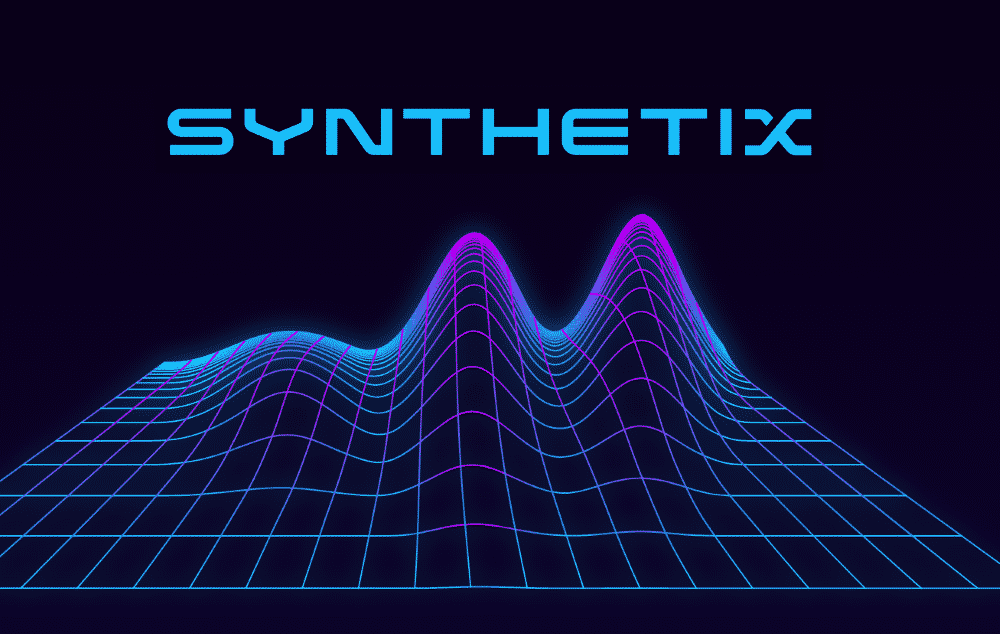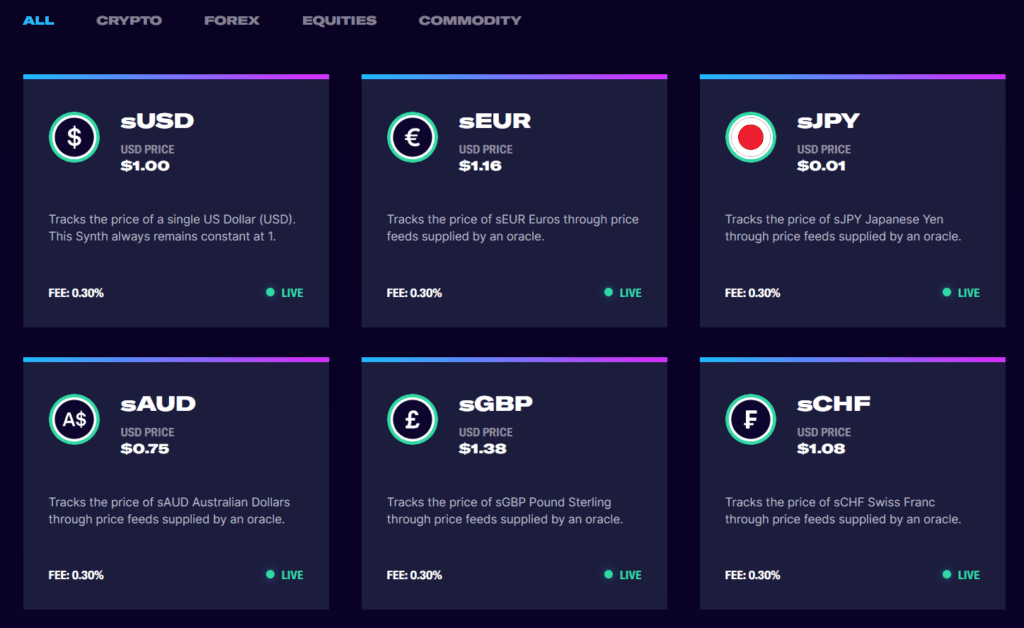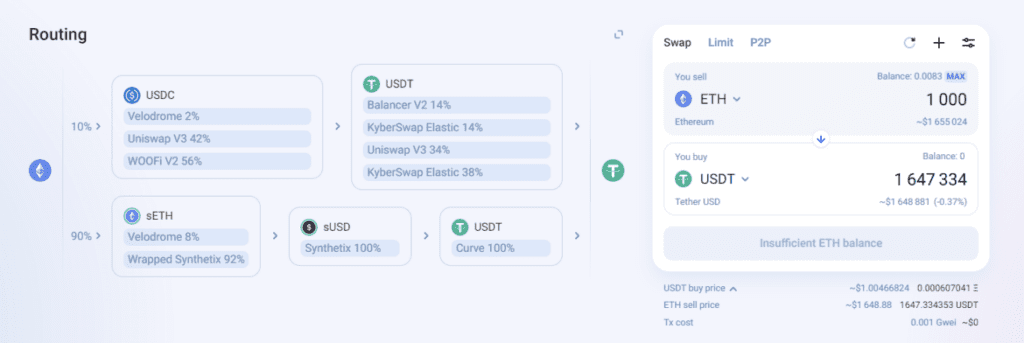Synthetix V3: With New Reconstruction, Will The Protocol Become More Attractive?
Key Points:
- Synthetix cleverly uses the non-slip mechanism between sUSD and sToken to tell the story of a new “atomic swap.”
- Synthetix wanted to provide better transaction depth and higher fee income but was limited to SNX-based, so its V3 was born.
- There are currently several V3-related optimizations that have been voted on.
After the atomic swap was officially launched in 2022 and achieved good results, Synthetix put V3 on the agenda. As one of the “oldest” DeFi protocols, Synthetix is the absolute leader in the Synthetix asset track at the beginning of 2021, and it has also sparked a lot of discussions in the industry on synthetic asset protocols.
According to the OKX market, the price of SNX reached an all-time high of about $29 on February 14, 2021, while neither Bitcoin nor Ethereum had reached their all-time highs at that time.
But after that, SNX did not perform too well. On the one hand, it is because the mechanism design of Synthetix is too complicated, and on the other hand, it is also because everyone finds that trading synthetic assets sETH and sBTC through such a high mortgage rate is not as good as trading Bitcoin directly. And Ethereum, coupled with the rise of a large number of emerging assets, makes Synthetix’s yield much less attractive.
However, Synthetix did not die because of this but cleverly used the mechanism of zero slippage between sUSD and sToken to tell the story of a new “Atomic Swap.”

Past Synthetix
Synthetix initially appeared in the market as a synthetic asset platform and set up a very special “debt pool” mechanism: users can borrow sUSD by staking SNX, which is different from MakerDAO staking assets to cast DAI, although Synthetix will also Liquidation is carried out when the SNX mortgage rate is insufficient (the current liquidation line is 160% mortgage rate), but the logic, in essence, is completely different.
In Synthetix, all users who stake SNX to mint sUSD share a “debt pool”. That is to say, when you mint sUSD, the proportion of the minted sUSD to all sUSD is your proportion to the entire debt pool. The minted sUSD is the debt of the entire system. Since everyone shares a debt pool, if other users increase the value of their assets through operations (such as using sUSD to buy sBTC, and sBTC rises), the debt of the remaining users will increase.
The reason is that the asset appreciation of some users means that the overall liabilities of the system have increased. At this time, if your asset appreciation rate is not higher than the system average, it means a loss. Conversely, if some users lose money, even if you hold sUSD without doing any operations, your debt will also be reduced.
This design is indeed very novel, making the whole system a dynamic balance. However, novelty does not mean that it can be accepted by most people. When the benefits of interacting with other DeFi protocols, holding other tokens, or NFT itself have high potential benefits, Synthetix is not enough.
To put it simply, SNX needs to be over-mortgaged to mint sUSD for investment. On the one hand, the target of investment is subject to certain restrictions. In addition, the income generated through investment may be diluted because other users also generate income. Although Synthetix provides stakers with SNX inflation incentives and transaction fee incentives, in a bull market, users will naturally choose to invest their principal directly compared to tokens that can easily double.
Atomic Swap
Although there is a shadow of over-collateralized stablecoins similar to MakerDAO, its mechanism is relatively more complicated, more strategies need to be set, and the user experience is not friendly. The narrative of synthetic assets is also fading amid the bombardment of new projects in the ever-changing bull market.
But Synthetix is not left with anything. The team also realized that the narrative of clinging to synthetic assets may eventually be abandoned by the market, so they cleverly used the mechanism to exchange sUSD for other sTokens and directly use the oracle machine to feed the price exchange without considering the depth The slippage-free transaction officially started the narrative of Atomic Swap.

The function of an Atomic Swap first appeared in SIP-120 jointly proposed by Synthetix founder Kain Warwick and Yearn founder Andre Cronje. The proposal was originally intended as a trading model within the Synthetix ecosystem but was later found to be an excellent liquidity tool due to the gradual increase in the externalities of the Synthetix ecosystem.
In August 2022, with the Tiaki version update, the atomic swap function was officially integrated into 1inch and began to provide a zero-slip trading path for on-chain transactions (mainly focused on large transactions).

Therefore, the Synthetix team is no longer obsessed with hitting the south wall on the narrative of synthetic assets but regards atomic swap as one of the most important functions of Synthetix. Of course, the deep binding between the Synthetix ecology and Optimism and the expansion of options (Lyra), contracts (Kwenta) and other ecology are also important parts of Synthetix’s strategy.
The birth of Synthetix V3
For Synthetix, although atomic swaps have indeed improved the liquidity and transaction depth of assets, including Ethereum and Bitcoin, to a certain extent, it is difficult to further expand their influence. The c-ratio (which can be understood as the excess mortgage rate of SNX) that Synthetix can currently obtain SNX inflation rewards is 400%.
In addition, the total amount of SNX tokens is only slightly over 300 million. Considering the number of staking SNX, it is used to provide The proportion of liquid sUSD and the proportion of sUSD being traded into other tokens; there are not many sUSD, sETH, sBTC and other assets that can really provide liquidity in atomic swaps.
According to Dune data, when writing this article, the total amount of SNX is about 314 million, and the total staking rate of L1 and L2 is about 67.37%, while sUSD, sETH, and sBTC (including L1 and L2) are about 36.9 million, 19,180, and 576.7 respectively.
According to the price of SNX, Bitcoin, and Ethereum at the time of writing, the total value of these sTokens that provide liquidity is about $83.4048 million, and the total value of staking SNX is approximately $558.9 million, the total value of sTokens available for atomic swaps is less than 15% of the total value of staking SNX.

Therefore, for Synthetix, if it wants to provide better transaction depth and higher fee income, it can only increase the number of sTokens such as sUSD, which is far from enough by relying on SNX alone. So Synthetix V3 came into being. On the premise of retaining futures, contracts, and other markets, it has greatly optimized the narrative of atomic swaps.

V3-related optimizations that have currently been voted on include:
SIP-255
SIP-255 adjusts the distribution path of the fees generated through atomic swaps that were originally rewarded to SNX stakers so that these fees are automatically destroyed to repay the stakers’ debts, thereby reducing debt and possible liquidation risks.
It can also be understood that the user receives sUSD from the atomic swap reward, and then this part of the sUSD that the user had to manually claim is automatically destroyed to reduce the debt of the pledger. Stakers can choose to re-stake the redeemed SNX to get this part of the reward.
From a project perspective, this measure can help pledgers, especially those who often forget to claim their rewards, maintain a long-term healthy debt ratio and reduce liquidation risks. In addition, this solution can also increase the utilization rate of SNX and sUSD, and reduce the sensitivity of pledgers to the mortgage rate, thereby stimulating more pledges by pledgers, effectively reducing the overall debt of the agreement, and minting more sTokens.
SIP-301
SIP-301 aims to create account token NFTs in ERC-721 format for users, enabling users to transfer their SNX pledged positions between different wallet addresses. This proposal decouples the absolute binding of “account” and “address.” Additionally, the ERC-721 standard can maximize the composability of smart contracts and existing user interfaces. It also allows the creation of secondary markets for account tokens.
In addition, operational security has been improved by adding a more powerful delegation function. For example, a hardware wallet may have an account entitled to claim rewards entrusted to a software wallet. If the software wallet is compromised, the attacker will only be able to claim the account’s unpaid rewards (e.g., cannot unstake all collateral on the account).
SIP-302, 303, 304, 305
These four SIPs include the mechanical design of the V3 version on pools, markets, liquidation and rewards. To put it simply, when minting sUSD with other voted mortgage assets (such as Ethereum may be included) in the V3 version, each market can set custom parameters according to asset attributes.
In other words, the new market in V3 will no longer follow the debt pool model, but a CDP model similar to MakerDAO, the difference is that the minted sUSD can increase the depth of transactions on the chain through the special function of atomic swap.
In addition, V3 has made experience improvements in supporting the establishment of license-free spot and futures markets, as well as liquidation and rewards.
From the perspective of the existing SIPs that have passed, Synthetix V3 has the potential to be expected by the market:
Asset mortgages other than SNX are supported. It has been analyzed above that only using SNX as collateral to mint sUSD will limit the actual circulation of sUSD due to the project’s own mechanism. The new version solves this limitation by supporting multiple collaterals to mint sUSD, and increases the channels for producing sUSD, which further releases the imagination of the project itself.

And this kind of imagination, on the one hand, the new market is not restricted by the unified debt pool and adopts the more popular CDP model, which may make sUSD and other assets that support atomic swaps an important hub for future on-chain transactions.
Only a 0.35% handling fee is required (the current data may change in the future), and the direct transaction mode based on the price of the oracle can increase the transaction depth to a considerable extent, and further become the preferred path for transactions through the aggregator.
On the other hand, the increase in the number of sUSD enables richer superstructure designs around sUSD in addition to its own unique atomic swaps (such as the permissionless spot futures market mentioned above). In this way, Synthetix’s own fee income will be further improved compared to the current one. With the current burning fee mechanism, SNX stakes can focus more on using sUSD to generate income.
More importantly, in addition to sUSD, the attributes of Synthetix’s own synthetic assets allow it to include assets such as sETH, sBTC, etc. At present, the expected time for the launch of Synthetix V3 is the end of the first quarter and the beginning of the second quarter.
At that time, Synthetix will change from a purely synthetic asset market aiming to become a “decentralized brokerage” to a two-wheel drive of synthetic asset sToken and atomic swap, a comprehensive DeFi protocol focused on liquidity.
For Synthetix, this can be said to be a relatively successful transformation, and for the DeFi market, it provides another good option to improve liquidity and transaction depth in addition to using mathematical formulas that consume a lot of Gas.
DISCLAIMER: The Information on this website is provided as general market commentary and does not constitute investment advice. We encourage you to do your own research before investing.
Join us to keep track of news: https://linktr.ee/coincu
Harold
Coincu News














